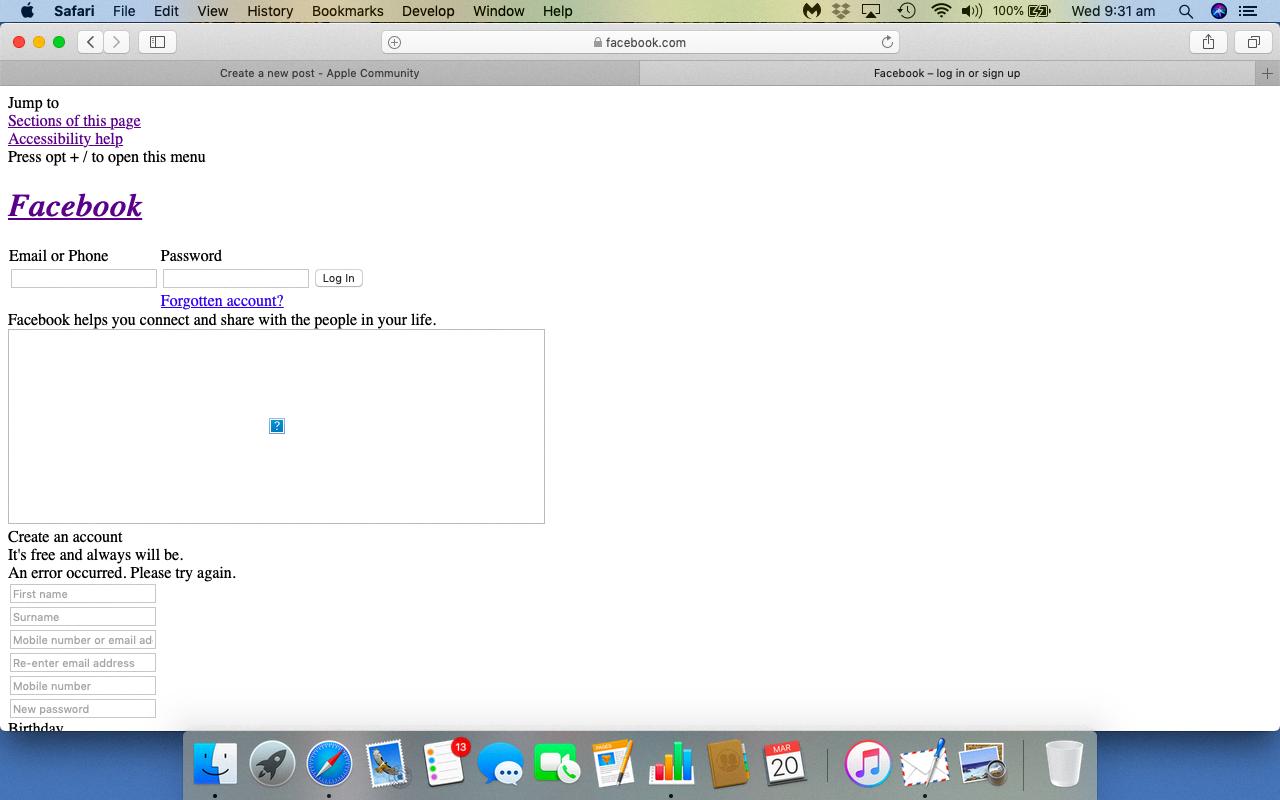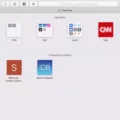Have you ever encountered the frustrating situation where images fail to load on your Mac? It’s a common issue that Mac users may face, and it can be quite inconvenient, especially when you rely on visual content for work or personal use. In this article, we will explore some of the possible reasons why images may not be loading on your Mac and provide some troubleshooting tips to help you resolve the issue.
Insufficient Disk Space or Memory
One of the primary reasons why images may not load on your Mac is due to insufficient disk space or memory. When your Mac’s storage is full or nearing capacity, it can significantly impact the performance of the system, leading to issues like images not loading properly. To check your available disk space, go to the Apple menu, select “About This Mac,” and then click on the “Storage” tab. If your disk space is low, consider deleting unnecessary files or transferring them to an external storage device to free up space.
Conflicting Apps
Another possible explanation for images not loading on your Mac is conflicting apps. Running too many applications simultaneously can overwhelm your system’s resources, causing it to slow down or freeze. To identify if conflicting apps are the root cause, try closing unnecessary applications and see if the images start loading properly. It may also be helpful to check for any pending app updates, as outdated software can sometimes lead to compatibility issues.
Internet Connectivity Issues
Sometimes, the problem lies with your internet connection rather than your Mac itself. If you notice that images are not loading on specific websites but are fine on others, it could be a sign of internet connectivity issues. Ensure that you have a stable and reliable internet connection by checking your Wi-Fi or Ethernet connection settings. You may also want to restart your router or contact your internet service provider if the problem persists.
Unsupported File Formats or Modifications
In certain cases, images may not load on your Mac if they are in unsupported file formats or have been modified by a computer. Macs generally support a wide range of file formats, but there can still be compatibility issues with less common formats. If you encounter this problem, try converting the image to a more widely accepted format like JPEG or PNG. Additionally, ensure that the image has not been extensively modified or edited, as this can sometimes cause compatibility problems.
Webpage or Server Issues
Another potential reason why images may not load is related to the webpage or server hosting the image. If the webpage is not pointing to the correct URL or if the image has been moved or removed from the server, it will result in the image not loading. In such cases, you can try refreshing the webpage or clearing your browser cache to see if that resolves the issue. If the problem persists, it may be worth reaching out to the website administrator for further assistance.
Images not loading on your Mac can be caused by various factors, including insufficient disk space, conflicting apps, internet connectivity problems, unsupported file formats, or issues with the webpage or server hosting the image. By following the troubleshooting tips provided in this article, you should be able to resolve the issue and enjoy a seamless browsing experience on your Mac.
Why is There a Blue Question Mark Instead Of Images On Your Mac?
The presence of a blue question mark instead of images in your Outlook for Mac email messages can be attributed to the default settings in the application. By default, Outlook for Mac does not automatically download pictures or photos in email messages if they are stored on the Internet. This is done as a security measure to protect users from potentially harmful or unwanted content.
When you receive an email with images, Outlook for Mac will display a blue question mark in place of the images as a visual indicator that the pictures have not been downloaded. This allows you to choose whether or not to download and view the images.
To view the images in your email messages and replace the blue question mark with the actual pictures, you can follow these steps:
1. Open the email message in Outlook for Mac.
2. Look for the banner at the top of the email that says “Download pictures”. It might appear as a yellow bar or a button, depending on the version of Outlook you are using.
3. Click on the “Download pictures” banner or button. This action will prompt Outlook to download and display the images in the email.
4. Once you click on the banner, the images will be downloaded and displayed in the email message. The blue question marks will be replaced with the actual pictures.
It’s important to note that downloading images from the Internet can carry some risks, as malicious content may be hidden within images. However, Outlook for Mac includes security features to help protect you from such risks.
By choosing to download the pictures in your email messages, you can ensure that you view the content as intended by the sender. However, exercise caution when downloading images from unknown or suspicious sources to maintain the security of your computer and personal information.
The blue question mark in place of images on your Mac in Outlook for Mac is a default setting that prevents automatic downloading of pictures from the Internet. You can choose to download and view the images by clicking on the “Download pictures” banner or button in the email message.
Why is Your Mac Not Loading Anything?
There could be several reasons why your Mac is not loading anything. Here are some possible explanations:
1. Insufficient Disk Space:
– Your Mac’s hard drive may be running out of space, causing it to slow down or freeze.
– To check the available disk space, click on the Apple menu in the top-left corner of the screen, select “About This Mac,” and go to the “Storage” tab.
– If your disk space is low, try deleting unnecessary files or transferring them to an external storage device to free up space.
2. Not Enough Memory:
– If your Mac doesn’t have enough RAM (random-access memory), it may struggle to run multiple applications or process large files.
– You can check the amount of memory installed on your Mac by going to “About This Mac” and clicking on the “Memory” tab.
– If your memory is running low, consider closing unused applications or upgrading your RAM if possible.
3. Conflicting Applications:
– Sometimes, certain applications running on your Mac can conflict with each other, causing the system to become unresponsive.
– Check if you recently installed any new software or updates that may be causing the issue.
– Try quitting or force quitting applications one by one to identify if a specific app is causing the problem.
4. Software or System Issues:
– Outdated or corrupted software can lead to Mac performance issues.
– Ensure that your operating system and applications are up to date by going to the App Store and checking for updates.
– If the problem persists, you may need to troubleshoot or reinstall the problematic software.
5. Hardware Failure:
– Although rare, hardware failure can also cause your Mac to stop loading anything.
– If you suspect hardware issues, such as a failing hard drive or faulty RAM, it may be necessary to consult with a professional or visit an Apple Store for repairs.
Remember to always back up your important data regularly to prevent any loss in case of system issues. If the problem persists despite trying these steps, it’s recommended to seek assistance from an Apple Support professional or a certified technician.

Why Are You Getting Question Marks Instead Of Pictures?
There can be several reasons why you are seeing question marks instead of pictures on your digital photo frame. Here are some possible explanations:
1. Incompatible file format: The pictures you are trying to display may not be in a compatible file format. Digital photo frames usually support common formats like JPEG, PNG, and GIF. If your pictures are saved in a different format or have been edited or modified with a computer, they may not display properly on the photo frame. Make sure your pictures are saved in a compatible format.
2. File corruption: It’s possible that the picture files themselves are corrupted or damaged. This can happen due to various reasons, such as errors during file transfer or storage. Try opening the pictures on your computer or another device to see if they are displaying correctly. If not, you may need to obtain a fresh copy of the pictures.
3. Insufficient memory: If your digital photo frame has limited internal memory or storage capacity, it may not be able to handle large or high-resolution picture files. This can result in images not displaying properly or showing question marks instead. Check if your photo frame has any memory limitations and ensure that your pictures are within the supported size and resolution.
4. Connectivity issues: If your digital photo frame is connected to a network or external storage device, there may be connectivity issues causing the pictures not to load correctly. Check your network or storage connections and ensure they are functioning properly.
5. Firmware/software compatibility: Sometimes, digital photo frames require firmware or software updates to support certain file formats or resolve compatibility issues. Check if there are any available updates for your photo frame’s firmware or software and install them if necessary.
Conclusion
Mac computers provide a reliable and efficient user experience. With their sleek design and powerful performance, they are a popular choice for many individuals and businesses alike. However, it is important to keep in mind that like any electronic device, a Mac can encounter issues that may affect its responsiveness.
One common issue that users may face is a lack of disk space or memory, which can lead to a sluggish performance. It is important to regularly monitor and manage your storage to ensure optimal functioning. Additionally, having too many applications running simultaneously can also cause your Mac to become unresponsive. It is advisable to close unnecessary apps and only run those that are essential to your tasks at hand.
Conflicting apps can also be a culprit behind an unresponsive Mac. It is important to check for any software conflicts and ensure that all your applications are up to date. Regularly updating your Mac’s operating system and software can help resolve any compatibility issues and improve overall performance.
Furthermore, when it comes to viewing pictures or images in emails, Outlook for Mac may not automatically download them. This can lead to the display of blue question marks instead of the intended images. To resolve this, simply click on the “Download pictures” option to ensure that the images are always visible.
In rare cases, hardware failure can also be a cause of an unresponsive Mac. However, it is more likely that the issue is related to software or system overload. By managing your storage, closing unnecessary apps, and keeping your software up to date, you can maximize the performance and responsiveness of your Mac.
Mac computers offer a reliable and user-friendly experience. By addressing any potential issues and taking proactive measures to optimize performance, you can enjoy a smooth and efficient computing experience on your Mac.








